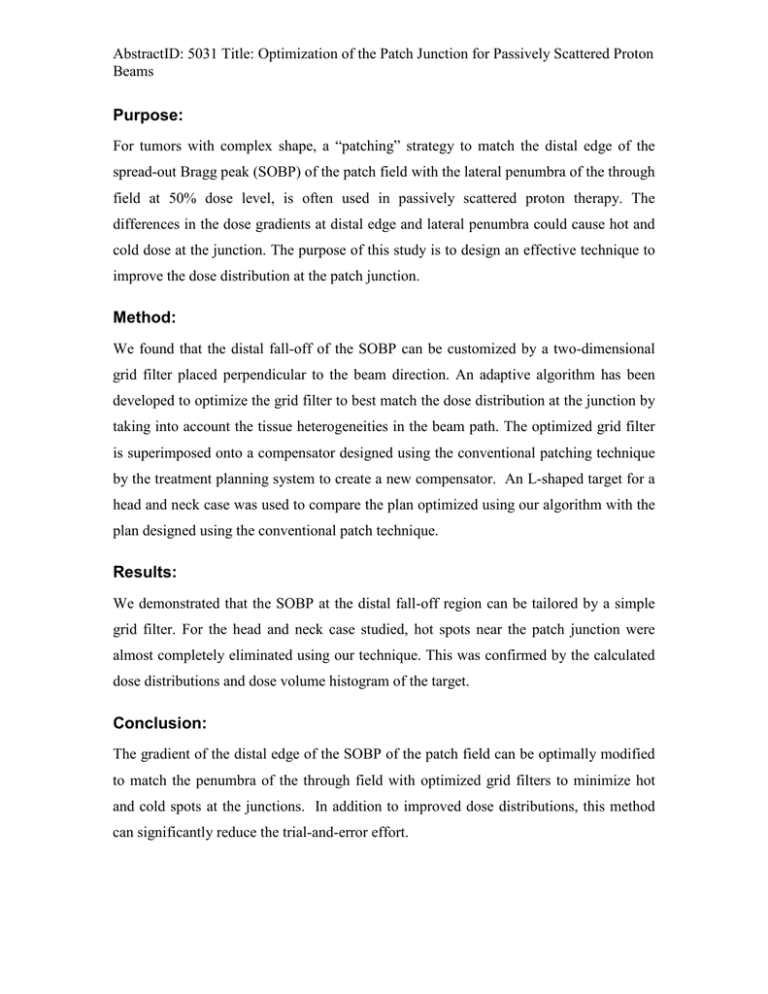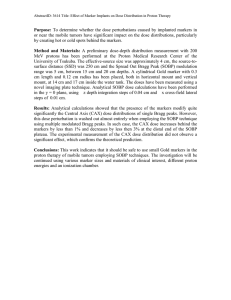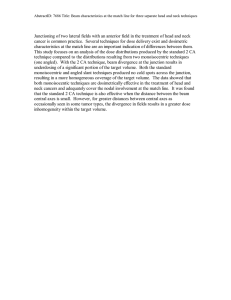Purpose:
advertisement

AbstractID: 5031 Title: Optimization of the Patch Junction for Passively Scattered Proton Beams Purpose: For tumors with complex shape, a “patching” strategy to match the distal edge of the spread-out Bragg peak (SOBP) of the patch field with the lateral penumbra of the through field at 50% dose level, is often used in passively scattered proton therapy. The differences in the dose gradients at distal edge and lateral penumbra could cause hot and cold dose at the junction. The purpose of this study is to design an effective technique to improve the dose distribution at the patch junction. Method: We found that the distal fall-off of the SOBP can be customized by a two-dimensional grid filter placed perpendicular to the beam direction. An adaptive algorithm has been developed to optimize the grid filter to best match the dose distribution at the junction by taking into account the tissue heterogeneities in the beam path. The optimized grid filter is superimposed onto a compensator designed using the conventional patching technique by the treatment planning system to create a new compensator. An L-shaped target for a head and neck case was used to compare the plan optimized using our algorithm with the plan designed using the conventional patch technique. Results: We demonstrated that the SOBP at the distal fall-off region can be tailored by a simple grid filter. For the head and neck case studied, hot spots near the patch junction were almost completely eliminated using our technique. This was confirmed by the calculated dose distributions and dose volume histogram of the target. Conclusion: The gradient of the distal edge of the SOBP of the patch field can be optimally modified to match the penumbra of the through field with optimized grid filters to minimize hot and cold spots at the junctions. In addition to improved dose distributions, this method can significantly reduce the trial-and-error effort.




